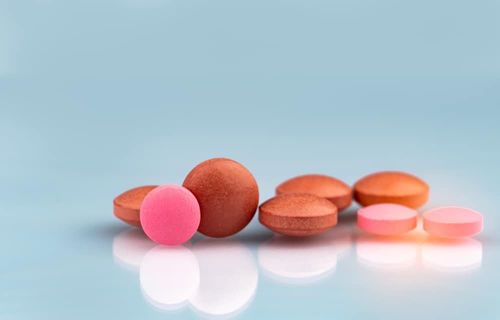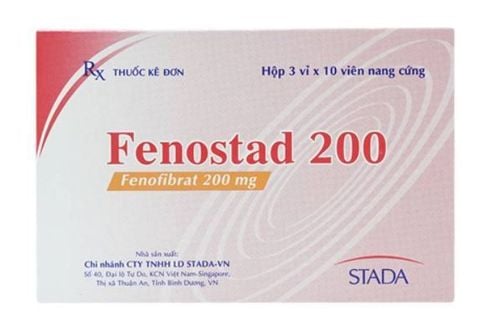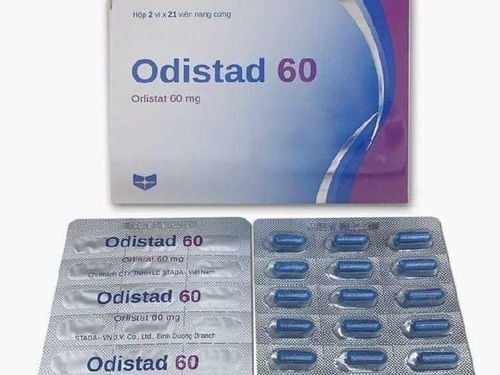This is an automatically translated article.
Dyslipidemia is an imbalance of lipids such as cholesterol, low-density lipoprotein cholesterol (LDL-C), triglycerides and high-density lipoprotein (HDL). This condition can be caused by diet, tobacco exposure or genetics and can lead to cardiovascular disease with serious complications in the future.
1. What is dyslipidemia?
Lipids, such as cholesterol or triglycerides, are absorbed from the intestines and transported throughout the body via lipoproteins for energy, steroid production, or bile acid formation. The major contributors to these pathways are cholesterol, low-density lipoprotein (LDL-C) cholesterol, triglycerides, and high-density lipoprotein (HDL). An imbalance of any of these factors, from organic or inorganic causes, can lead to dyslipidemia.
Some health behaviors are thought to be the primary cause of influencing and increasing blood lipid levels. Examples include tobacco use, inactivity, nutrition, and obesity. Specific nutritional risk factors that can cause abnormalities in lipid metabolism are not enough fruits, nuts/seeds, vegetables or consuming too much saturated fat.
In rare cases, patients may have dyslipidemia due to familial disorders. In which, autosomal dominant mutations cause most cases of familial hypercholesterolemia in LDL receptors, increasing LDL-C concentration. Other mutations in the cholesterol pathway have been identified but are less common.
However, regardless of the cause, the number of patients with identified dyslipidemia increases with age. This is also accompanied by consequences or complications of arterial disease due to atherosclerosis in the organs.
2. How to diagnose dyslipidemia?
The most important medical history in the group of patients leading to a diagnosis of dyslipidemia includes tobacco use or specifics of diet. Of these, past medical history is important in identifying patients who will need primary versus secondary prevention if statin therapy is indicated. Finally, family history is important to identify familial hypercholesterolemia. This is often noticeable in young patients and many family members have the same disease.
Signs through physical examination will not be obvious in cases of early dyslipidemia. As the disease worsens over time, the patient can sometimes detect yellow lumps, deposits of lipids on the skin and sometimes in the subcutaneous tissue. They are yellowish in color and may form patches, nodules, or patches on the creases of the palms, eyelids, or tendons of the heel. Accordingly, once detected jaundice on the skin, the patient should be screened for dyslipidemia.
The main diagnostic tool for dyslipidemia is by testing the concentration of fasting blood lipids including total cholesterol, LDL, HDL and triglycerides. These tests are recommended to screen all men 35 years of age and older as well as high-risk men 20 to 35 in addition, all women 45 years of age and older as well as those at risk. tall muscle from 20 to 45 years old. Thereafter, repeat testing is done every 5 years in the absence of atherosclerotic disease for all individuals aged 20 to 78 years.
3. Treatment of disorders of blood lipid metabolism
The initial step in treating dyslipidemia is lifestyle modification, which includes a diet that focuses on consuming vegetables, fruits, and whole grains with appropriate caloric needs. In addition, adults should engage in moderate to vigorous physical activity three to four times a week for at least 40 minutes. The next, first-line treatment for dyslipidemia is a 3-hydroxy-3methylglutaryl-coenzyme A (HMG-CoA) reductase inhibitor statin such as atorvastatin or rosuvastatin. Patients with clinically significant atherosclerotic cardiovascular disease, including acute coronary syndromes, history of myocardial infarction, stable or unstable angina, revascularization, and stroke, and under 75 years of age should take high-intensity statins, patients over 75 years of age should take moderate-intensity statins. In addition, high-intensity statin therapy should be initiated if the patient is 40 to 75 years of age and has an LDL-C greater than or equal to 190 mg/dL or a history of diabetes and an LDL-C of 70 to 189 mg/dL. Patients should receive a moderate- or high-intensity statin if they are 40 to 75 years old, their LDL-C is 70 to 189 mg/dL, and their 10-year atherosclerotic cardiovascular disease risk is greater than or equal to 7.5 %.
For primary prevention, the goal of statin therapy is to reduce LDL-C levels by about 30% to less than 50% with moderate-intensity statins and greater than or equal to 50% with high-intensity statins. High-strength statins are atorvastatin 40 or 80 mg and rosuvastatin 20 mg. Some mid-strength statins include atorvastatin 10 mg, rosuvastatin 10 mg, simvastatin 20 mg or 40 mg, and pravastatin 10 mg.
For secondary prevention, as defined when a patient already has coronary artery disease, a goal is set for an LDL-C of less than 70 mg/dL after being placed on a high-intensity statin for six weeks. If this goal is not met and the LDL-C is significantly greater than 70, high-intensity statin therapy should be initiated. If the patient is not at high risk, the LDL-C goal should be maintained below 70 mg/dL. If the patient is at high risk (has had acute coronary syndrome in the previous year, familial hypercholesterolemia, diabetes, chronic kidney disease (stage 3 or 4), or atherosclerotic cardiovascular disease, or requiring revascularization while on statin therapy), the LDL goal should be less than 50, and if unresponsive, another class of lipid-lowering agents should be added.
Accordingly, there are currently two classes of drugs that are recommended for use with statin therapy because they have been shown to reduce cardiovascular outcomes. One of them is ezetimibe, which inhibits cholesterol absorption. This drug can lower LDL-C by 25% when combined with statin therapy. Another targets the proprotein convertase subtilisin/kexin type 9 (PCSK9), which upregulates the LDL receptor. An increase in PSCK9 reduces the LDL receptors and thus increases the concentration of LDL in the blood. PCSK9 inhibitors are monoclonal antibodies that bind to PCSK9 and, in doing so, lower LDL-C levels. In addition, other types of treatment that have not been shown to reduce cardiovascular events but are useful in the treatment of dyslipidemia are bile acid sequestrants such as cholestyramine, colestipol, and colesevelam, which decrease reabsorption Bile acids, therefore, increase LDL-C clearance and decrease blood concentrations. Fibric acid derivatives (fibrates) are peroxisome proliferative activated receptor agonists. These substances have been shown to increase HDL-C and decrease triglycerides. However, in combination with a statin may increase the risk of myopathy and rhabdomyolysis, which can cause systemic myalgia. Current guidelines recommend that statins should not be used with gemfibrozil. Niacin has been shown to increase HDL and decrease VLDL, which also lowers LDL but has a significant side effect profile, the largest of which is flushing. Taking aspirin can reduce the occurrence of this side effect.
4. What complications can lipid metabolism disorders cause?
The most significant complication for dyslipidemia is atherosclerotic cardiovascular disease, including sudden cardiac death, acute myocardial infarction or stroke.
Multiple studies have demonstrated that statins and appropriate dyslipidemia significantly reduce the risk of all-cause mortality, including cardiovascular events and cardiovascular mortality.
In summary, dyslipidemia is a common cause of atherosclerosis. Cholesterol and triglyceride levels can be lowered through a diet that limits saturated fat, cholesterol, trans fatty acids, and total fat. Increased fiber, soy foods, and exercise can make these measures more effective. The patient's family may also be at risk for dyslipidemia and other cardiovascular problems. Their adoption of the same diet and lifestyle changes made by the patient, including smoking cessation, will encourage patient compliance and simultaneously improve the health of family members. .
Please dial HOTLINE for more information or register for an appointment HERE. Download MyVinmec app to make appointments faster and to manage your bookings easily.













